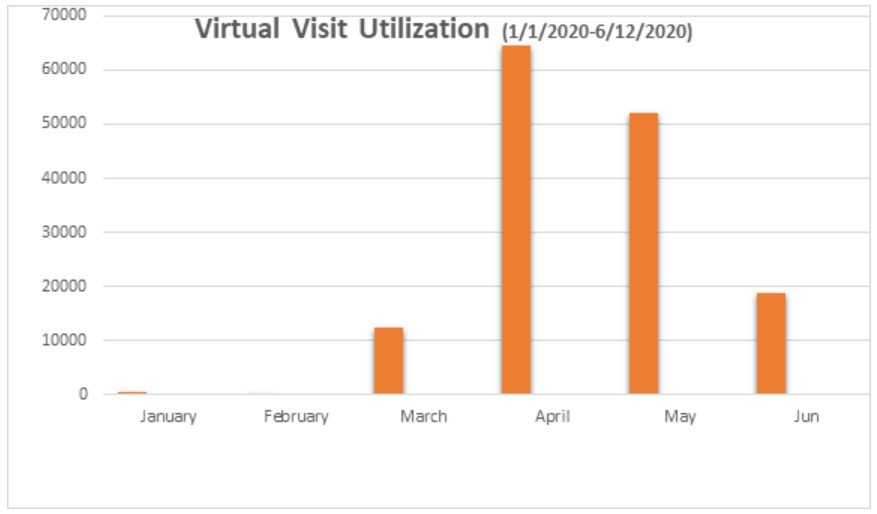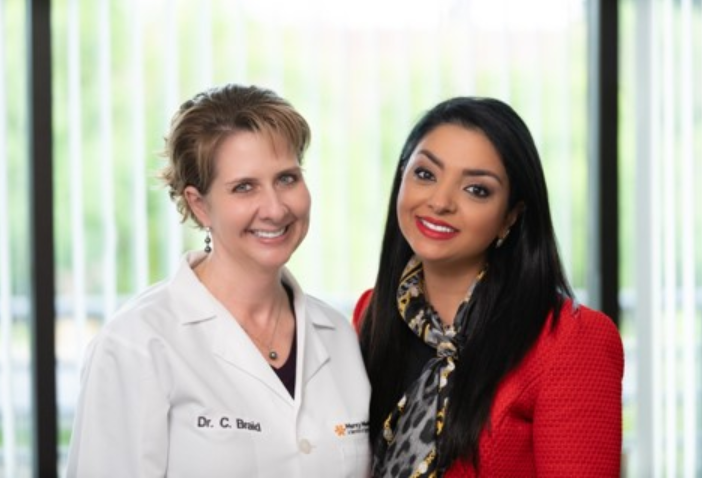Dr. Christine Braid
Bita Farhadpour, MBA
Dignity Health Medical Group
Dignity Health has a robust virtual care program, which was started in 2008. However, we have seen an explosion in virtual activity since the COVID-19 crisis in March 2020. The teamwork and dedication of our clinicians, leadership, and staff allowed us to meet the needs of our patients amid COVID-19. One of our long-term goals was implementing convenient virtual visits for all 200+ Dignity Health Medical Foundation clinics. Fast-forward to March 2020 and COVID-19 skyrocketed that goal into a reality much quicker than originally anticipated.
In January 2020, only 337 patients received virtual visits throughout all our medical groups. By the end of April, over 64,800 patients were seen via virtual visits. The total number of virtual visits as of June 12th, is over 149,000.


This increase is a testament to Dignity Health Medical Foundation executives, leaders, and staff who worked tirelessly to implement virtual care services and provide training and resources to physicians. Their incredible dedication and hard work brought high-quality, safe virtual visits to patients during a time of crisis. The executive leaders’ commitment and partnering with physician leaders made the virtual care services successful. Our team — which is physician driven, patient centric and operation supported — has done amazing work.

On March 23, a HIPAA-compliant virtual video platform was identified and deployed. In one week, over 1,000 physicians and all accompanying clinic staff were on-boarded and trained. Teamwork and expert leadership enabled this to happen successfully in such a short amount of time. Over the next month, trainings continued, resulting in over 96.6% of Dignity Health Medical Foundation physicians currently using virtual visits to care for patients.
We found the success was the result of collaboration with all medical group leaders and our virtual care team. During this virtual evolution we proved the perfect combination for virtual care success is a physician and administration dyad team.
Clinician education and training were key elements of success in our program. Recognizing that not everyone has the same learning styles, we developed several training mechanisms. We emphasized document learning, e-learning (muscle memory), and video training. We created the Clinician Virtual Care Education Committee with the stakeholders from Physician Enterprise, Innovation Team, Transformation and Implementation, Informatics, Digital Office, Clinical Support Services, Clinical Education, Marketing and IT. We are maintaining successful virtual visits and expansion of services by keeping relevant and up-to-date training and addition of national goals.
To ensure quality of virtual care on both physician and patient side, we captured patient and physician satisfaction in regard to virtual visit experience. The survey was seven to 12 questions about patient and clinician platform and technology, usability and satisfaction which was modeled on national survey guidelines tailored to virtual care. We received 603 patient surveys and 189 physician surveys between April 27 and May 6. The results were as follows: 93.86% of patients rated overall video visit very high, 92.52% of patients rated ease of use of technology for video visit, and 91.92% of patients rated that they recommend video visits to others.
On the physician side, 83.07% physicians rated agreeable and satisfied with virtual care platforms, and 49.47% physicians rated virtual visit as about the same or better than in-person visits.
In summary, we found the best way to implement any sustainable virtual care service is to have a collaborative team of clinicians plus patients, plus operation, plus technology. Without these four pillars, virtual care is not possible.
We would like to thank everyone who was involved in helping make virtual care a huge success.
